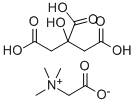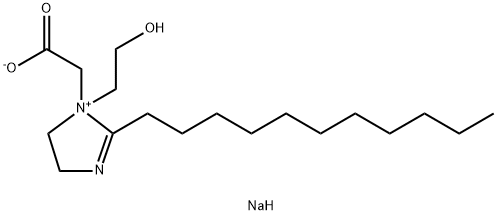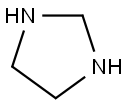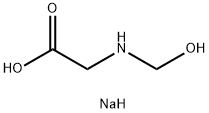Organic Chemistry
Amphoteric surfactant refers to a surfactant simultaneously carrying the anionic and cationic hydrophilic group with its structure containing simultaneously hermaphroditic ions which are able to form cation or anion according to the (such as pH changes) ambient conditions. From the practical perspective, the usually adopted cationic part is amine salt or quaternary ammonium hydrophilic group while the anionic moiety is a carboxylate, sulfonate, phosphate hydrophilic group, especially the amino acid type amphoteric surfactants that contains both amino and carboxy group or the intramolecular ammonium salt type amphoteric surfactants consisting of carboxyl group and a quaternary ammonium group.
Amphoteric surfactants contain two types, one of which is pH-sensitive while the other is not sensitive at all pH ranges. The aqueous solution of former has varying dissociation degrees with varying pH value. When it exhibits alkalinity, it exhibits anionic surfactants agent properties; upon exhibiting acidity, it exhibits properties of cation surfactant; upon being neutral, it exhibits non-ionic surfactant properties. The balance point of the cationic type and anionic type is called isoelectric point. The amino acid type amphoteric surfactant will form precipitate at the isoelectric point. Compare with it, the intra-ammonium salt type amphoteric surfactants can still maintain a excellent solubility in the isoelectric point. Others types such as hydroxy-imidazoline and N- alkyl betaine type exhibit cationic properties upon acidicity. Another example is sulfonic acid type betaine and phosphonyl group betaine amphoteric surfactants used in shampoos; at all pH values, they exhibits anionic. The lecithin [1] contained in egg yolk belongs to a phospholipid-type amphoteric surfactant and is the only ionic surfactants that can be used in the food industry. [1] is almost insoluble in water with excellent emulsifying properties of oil.
Generally speaking, amphoteric surfactant has low toxicity, antibacterial properties, excellent resistance to hard water, and excellent compatibility with various kinds of surfactants. Therefore, it can be used as shampoo-purpose foaming agents with high safety, detergent fiber as well as microbicides. E.g., an alkyl group glycine (diamine- ethyl- group) and di (alkyl amino- ethyl group) glycine can be used as a germicide-purpose amino acid-type amphoteric surfactant. Another example is the quaternized fatty acid amides glycine with mild properties and almost no irritating effect. It can be used in baby shampoos. Lauryllactam imidazolium salts are used as the foaming agent of shampoo powder. The amido propyl betaine contained in coconut is also a kind of amphoteric surfactant and can be used for mild shampoos and skin cleansers. In general, amphoteric surfactants are rarely used alone and are mostly used in compound with fatty alcohol sulfates in order to improve the solubility, reduce the irritation property, increase the viscosity as well as increase the foam stability. Amphoteric surfactants may also be used as the antistatic agents of synthetic fiber as well as metal rust agent. Because of the high cost, it applications are subject to certain restrictions.
Amphoteric surfactants are categories undergoing rapid development in recent years. Because of their low toxicity and low irritation on the skin and eyes during the usage process as well as excellent biodegradability, resistance to hard water, emulsifying, dispersing, wetting, foaming, antistatic property, and the high compatibility with all other types of surfactants, their applications in daily chemical industry, textile industry, food, pharmaceuticals, dyes and pigments are growing. It can be used as textile finishing auxiliaries, dyeing auxiliaries, dispersants and dry cleaning agents. Although its price is a bit high, because of some of the above advantages, the application in some cases is sufficient to compensate for the defects of high price.
- Structure:

- Chemical Name:Lauryl betaine
- CAS:683-10-3
- MF:C16H33NO2
- Structure:

- Chemical Name:Betaine citrate
- CAS:17671-50-0
- MF:C11H19NO9
- Structure:

- Chemical Name:SODIUM LAUROAMPHOACETATE
- CAS:156028-14-7
- MF:C18H35N2NaO3
- Chemical Name:Cocoamine
- CAS:61788-46-3
- MF:C38H46N2O8
- Chemical Name:Fatty acids, C10-20 and C16-18-unsatd., reaction products with triethanolamine, di-Me sulfate-quaternized
- CAS:91995-81-2
- MF:
- Structure:

- Chemical Name:Imidazolidine
- CAS:504-74-5
- MF:C3H8N2
- Structure:

- Chemical Name:Sodium hydroxymethylglycinate
- CAS:70161-44-3
- MF:C3H8NNaO3
- Structure:

- Chemical Name:Lauramidopropyl betaine
- CAS:4292-10-8
- MF:C19H38N2O3
- Chemical Name:RENNIN
- CAS:9001-98-3
- MF:
- Chemical Name:Betaines, coco alkyldimethyl
- CAS:68424-94-2
- MF:
- Chemical Name:Cocoamidopropyl betaine
- CAS:86243-76-7
- MF:
- Structure:

- Chemical Name:(carboxylatomethyl)dimethyl(octadecyl)ammonium
- CAS:820-66-6
- MF:C23H47NO2
- Structure:

- Chemical Name:(carboxymethyl)dimethyloleylammonium hydroxide
- CAS:871-37-4
- MF:C22H45NO3